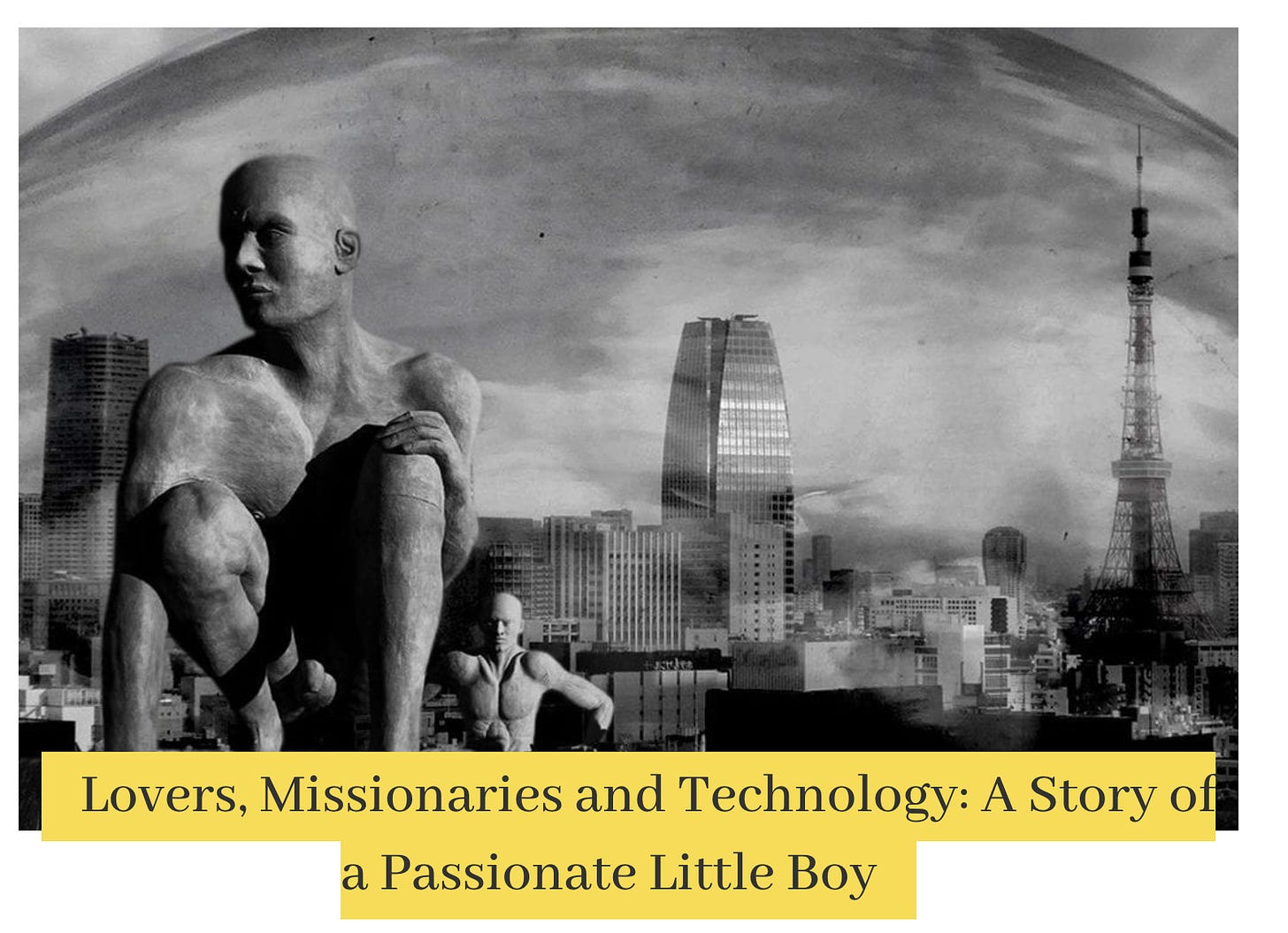I’ll start with a side remark. The last person who just couldn’t shut up about how he was “helping me be a better human” with his “feedback” on my choices and behaviors was my abusive ex. Just saying.
Now please meet Deloitte and their trendy drivel about “making humans better at being human.” How do they want to improve humans? By subjecting them to incessant AI nagging, as said humans are trying to actually get some work done.
Make no mistake. The ones at the very top aren’t going to implant a chip or even wear a wearable that would annoy them 24/7 with AI preaching. They will be at their ski resort, skiing. Or swimming in the sea. Or enjoying some old-fashioned interaction with an attractive human being of their choosing (or maybe something darker than that, but in any case, not being bothered by AI that is telling them how to be a better human).
How ironic, given that those coming up with such ideas are the ones who actually need a lot of improvement in the area of being “human.”
Gogi Anand from LinkedIn shared, “The whole employee experience is about to be turned upside down by technology, and it's going to be very beneficial for people. [← which people?] For example, when I do presentations, I get prompts from Speaker Coach within Microsoft Teams, and it tells me how quickly I’m speaking, or if I'm dominating a meeting. It gives me instant feedback that helps me become a better presenter. When I look in my recognition platform, AI nudges me to be more inclusive in my language [← I am sure he finds it delightful]. This type of technology will be really helpful for both information workers and frontline workers.”
Leveraging principles from psychology, anthropology, sociology, and behavioral science, these innovative technologies are reshaping the boundaries of how we define and improve human, team, and organizational performance [← here we go again with Schwabian jargon].
As we move from the information age to the imagination age [←that explains the past three years, thank you for the clarification], technology is evolving from helping workers produce outputs to enabling humans and teams to focus on outcomes, making work better for humans and humans better at work.™ […] Realizing this value requires organizations to move away from outdated views of technology as a productivity enhancer and embrace the potential of intelligent technologies to enable human and team impact, powered by technology [← unintelligible word salad in the style of a Soviet communist party meeting].
Let me picture a crude but realistic analogy for this whole ‘real-time AI feedback.’ Imagine you are having sex, and a robot wearable is “correcting” your performance in real time. Fun, right? Thrilling.
These “behavioral scientists” and corporate consultants need to get off crack and stop poisoning our existence. But of course, they would only listen to my advice if they cared about anything real (besides their bank accounts). And since they do not care if the people have any actual fun at work or in life, they don’t mind squeezing the “workers” dry, triggering nervous breakdowns in them, and then tossing them out.
Oh, and also this: Lots of people nowadays are “on the spectrum,” have a short fuse, and are very poisoned—so they wouldn’t be even able to physically tolerate this constant nagging for a very long time.
But, don’t let me distract you with my imperfect human thought. Here’s more from the horse’s mouth:
Enable technology to work on the worker (and the team). The traditional view of technology as a substitute or supplement for human labor is too narrow. Moving forward, you need to harness technologies that help your people and teams become the best possible versions of themselves. This means nudging them to learn new behaviors, correct old behaviors, and sharpen skills. For example, successful and error-free surgeries in the operating room (OR) require finesse, but determining the exact amount of pressure to apply on the instrument is challenging for surgeons. Technology provides surgeons with smart scalpels and forceps that allow them to gauge and adjust pressure in real time, subsequently improving precision and patient outcomes.
Use interventions and nudges to make humans better. Technology can also aid humans in improving on things that are “fundamentally human.” Given the traditional view of technology as a substitute or supplement for humans, it’s ironic to think of technology being used to make humans more human. Yet that’s exactly what we’re talking about here. Technology can help us get better at what we already do best—things like driving well-being, practicing emotional intelligence, and fostering creativity and teaming, which are things technology itself can’t do.
Helping humans become better versions of themselves is a worthwhile endeavor on its own. However, from a business perspective, it has the valuable fringe benefit of making people better at their jobs, thereby boosting engagement and performance. Building on the surgery example from the previous fundamental, technologies are also monitoring care team members’ time in the OR and cross-referencing that time with error data for the relevant type of surgery, to deliver alerts about fatigue risk. Not only does this improve outcomes for the patient, it also improves well-being for the surgical team.
The new fundamentals
Scale insights for greater impact. Beyond the individual and team impact, this technology–human team collaboration can also drive impact through insights at scale. All this technology, whether it’s used for nudging, collaboration, training, or another purpose, creates data “exhaust.”6 This data is a powerful tool all on its own. Following the surgical example, technology aggregates the data about finesse adjustments, time in-surgery, and errors, to draw insights across an entire hospital or health system to inform changes to workforce practices like shift length, scheduling, or equipment investments. This type of information could then be used to elevate performance and outcomes across workers, teams, the organization, and the ecosystem.
This imagined future isn’t just possible; in many cases, it’s already here. And its potential impact is even greater when applied not just to individuals, but also to teams (and to networks of connected teams pursuing adjacent goals). The result is improved performance, learning and development, communication, and collaboration. Executives who responded to the Deloitte 2023 Global Human Capital Trends survey believe in the benefits of enabling technology and teams to collaborate to drive outcomes, with one in three reporting an increase in financial performance as a result of their approach to technology and team collaboration.
Current experiments: What leading organizations are exploring
Humu analyzes company data and worker feedback to identify changes likely to improve workers’ happiness, performance, and retention [← leave the happiness to the robot]. The technology is like a virtual personal coach, using AI to mine worker surveys and other data inputs to identify which behavioral changes could help workers and organizations reach their goals. It then sends workers tailored nudges that appear in email, Slack, or Microsoft Teams. The nudges are aimed at changing behaviors, often with explanations or links to research about why the behaviors matter. As workers (and the people around them) report improvement, machine learning helps the system move on to additional goals.
Ultranauts is using Teams and Slack bots to eliminate barriers that made it challenging for neurodivergent people to find a home in tech companies. [← has anyone considered stopping to poison the world so that we don’t have so many “neurodivergent” people?] The company’s CEO empowered employees to create their own personal “biodex”—a quick-start guide to working with them so people with diametrically different styles can immediately understand how to best collaborate.
Drishti’s action recognition technology, which is enabled by AI and computer vision, allows DENSO, a Japanese auto component manufacturer, to generate real-time, continuous analytics on manual tasks performed by its production employees. The resulting data set gives production managers the ability to quickly identify and eliminate bottlenecks, improve processes, boost efficiency, and prioritize tasks. Drishti CEO Prasad Akella noted, "We’ve found that employees at factories are excited to use Drishti because it helps them train continuously without interference from a manager. The system nudges the line associate when a mistake happens, giving him or her the opportunity to fix the problem, unbeknownst to anyone else." [← the devil is in the detail]
Dawn Avatar Robot Café in Tokyo has robot servers that are operated remotely by people who can’t leave their home due to disability, childcare, or other reasons. These remote-controlled robot avatars were designed to make the workplace more accessible, giving the remote café workers more opportunities to interact with others and expanding the pool of potential café workers.
Thank you, Deloitte, and hello, our best frenemy, preachy robot.
Igor Chudov also wrote a great article about the monitoring of brain activity.
Note to readers: If you are in the position to do so, I encourage you to become a paid subscriber or donate. I love you in any case, but it helps A LOT. Thank you from my heart for your support!






Thank you to Deloitte, the WEF, and the 4th Reich globalists for helping me become a Luddite 😂
For anybody who ever used Waze and had the experience of it telling you to go the exact opposite way from where you asked to go … Now imagine that same kind of technological glitch when a surgeon is using a scalpel. Whoopsie!
In Silicon Valley I already worked at a company that employed some of this technology, surprise! with Microsoft products. It’s actually quite creepy when it gives you a summary of your past week or how many people you talk to in your network, etc. you get the feeling of being watched, even more than you already know you are.
On the positive side, I can imagine a comedian describing this kind of environment and the laughs would be huge. I can also imagine people smashing the hell out of their computers.